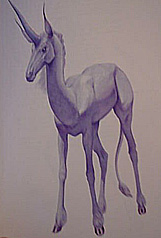Tennis Shoes
Origins
My informant had a story about tennis shoes hanging from telephone wires and what they mean. When she was in junior high, she was told those shoes have a specific significance. She believes she heard it from a friends older brother who was in high school.
Quoted from Reverend Kenney:
If you walk through many different sections of LA and communities around LA, occasionally there is a pair of tennis shoes hanging from telephone line. You should be somewhat frightened when you saw them some kids would say.
I grew up in Los Angeles and was told tennis shoes were put on telephone poles to show which territory belonged to a specific street gang. If youre in a particular gang, youre supposed to read the signs / symbols of a gang and stay out, or you will be threatened.
When I came back to Los Angeles 20 years ago, the urban legend was changed a bit. Now, it signals that the house facing those tennis shoes was a crack house. If you were looking for crack, that was the place to get it. This is a story that may have some truth to it. But if you look carefully, the shoes are all different sizes. Most are not very expensive tennis shoes. In reality, what they show is that some kid was mad at another kid, took their shoes, and threw them over the telephone line. Or, it means one kid was challenging another kid to see if he had the strength to get the tennis shoes up there.
Collectors comments:
Although I was born in Chicago and never came to Los Angeles until I began at USC, I too vaguely remember seeing tennis shoes on telephone pole wires. However, I never really heard any of these legends about the significant of the shoes. I simply saw them and assumed one kid had stolen another kids shoes and tossed them over the telephone pole wires. It seems like the most logical explanation since as a child, my friends and I would always push ourselves to the limit. We would try to pop wheelies on our bikes over unstable terrain, constantly run around train tracks, and perform other actions that we used to try assert our bravery. Repeatedly throwing a pair of shoes over telephone pole wires sounds like a lot like the challenges we would make amongst ourselves.

